Introduction to the characteristics of Coffee Bean Red Wine treatment in Hartmann Manor, Panama
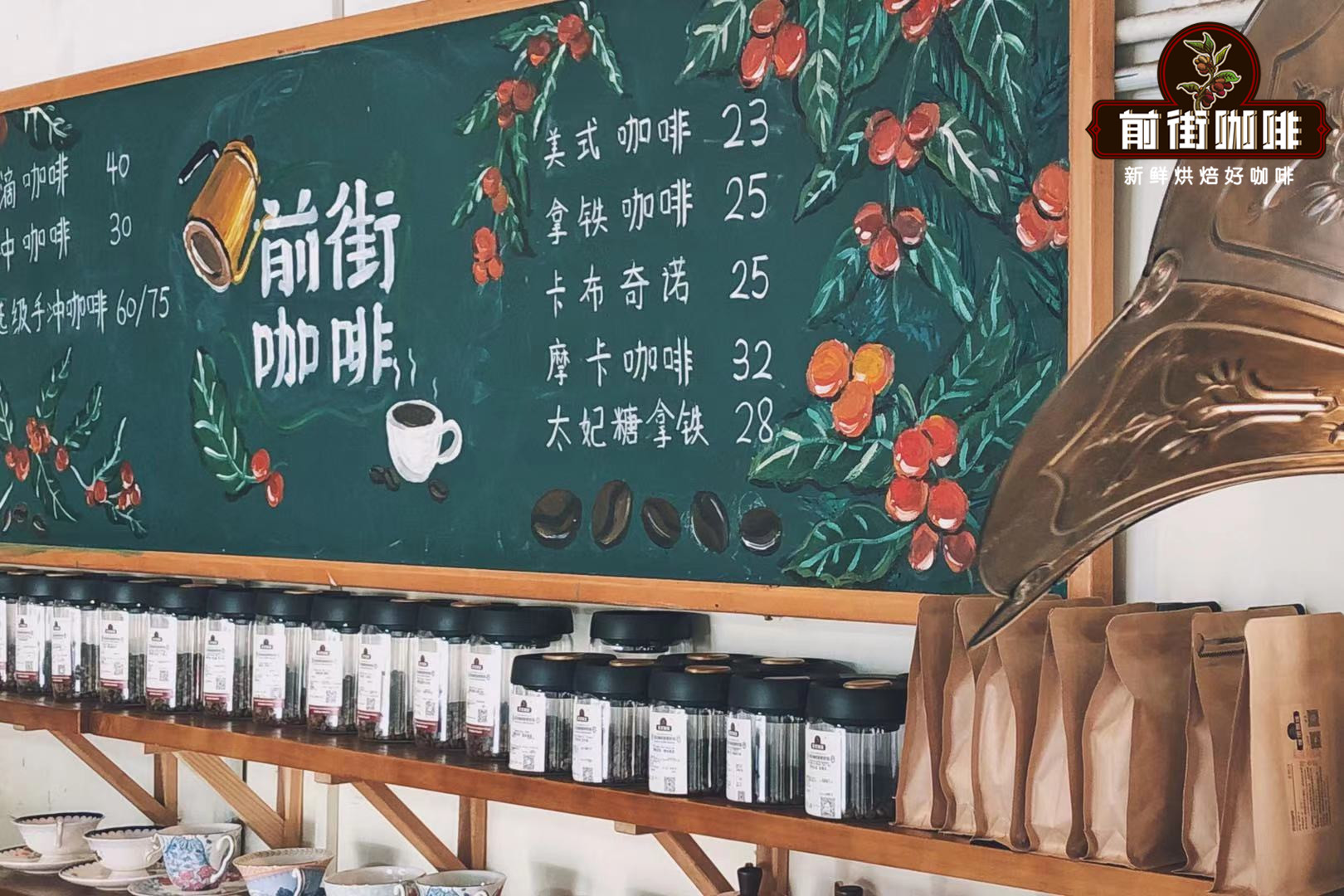
Professional coffee knowledge exchange more coffee bean information please follow the coffee workshop (Wechat official account cafe_style)
Red wine treatment of Hartmann Manor in Panama
Panama Hartmann Black Winey
■ country: Panama
■ level: SHG
■ producing area: Walken producing area
■ altitude: 1250-1700 Meters
■ treatment method: red wine treatment method
■ variety: Kaduai
■ Manor: Hartman Manor
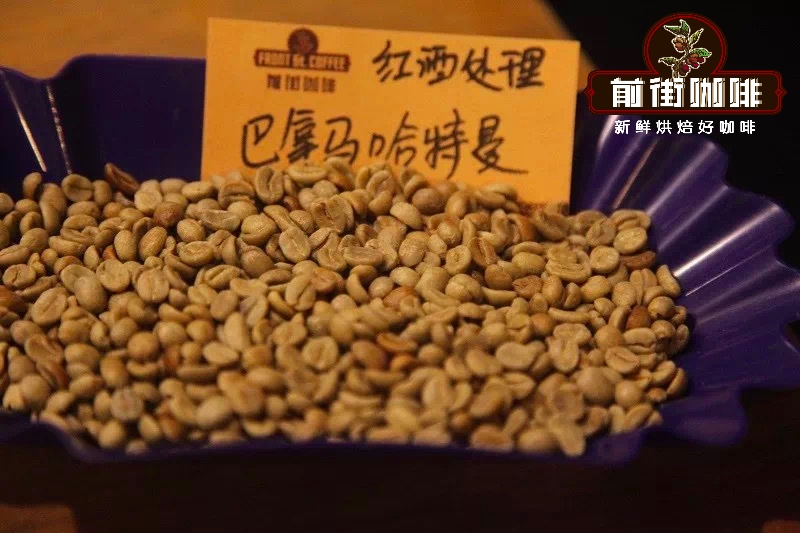
Qianjie Coffee considers Panama one of the best coffee producers in the world. In 2004, it was well known in the world for Rosa Coffee (also known as "geisha"), but before that, Panamanian coffee had always been a marginal country of boutique coffee and had not been taken seriously by the international coffee community. The rosy summer variety cultivated by the Peterson family has become popular all over the world. Qianjie Coffee believes that the commercial value of this variety of coffee is huge, coupled with the fact that Panamanian boutique coffee farms can enjoy reasonable labor laws and wage protection locally, it is inevitable to set off a comeback on the world coffee map. But the irony of Front Street Coffee is that as Americans increasingly like to buy holiday homes in Panama, the resulting commercial development is likely to engulf the country's coffee-growing farmland, making Panamanian coffee production declining year by year. Coffee prices are rising.
About Panamanian coffee.
Panamanian coffee originated in 1780, when Europeans introduced the first Typica tree species. After that, the local people began to grow it widely. In terms of flavor, Qianjie Coffee thinks that Panamanian coffee is very smooth, full-grained and light in weight, with rich aromas of citrus, jasmine, almonds and mangoes, sweet nectar and bright and changeable acidity. Its high-quality coffee beans have pure flavor and rich characteristics.
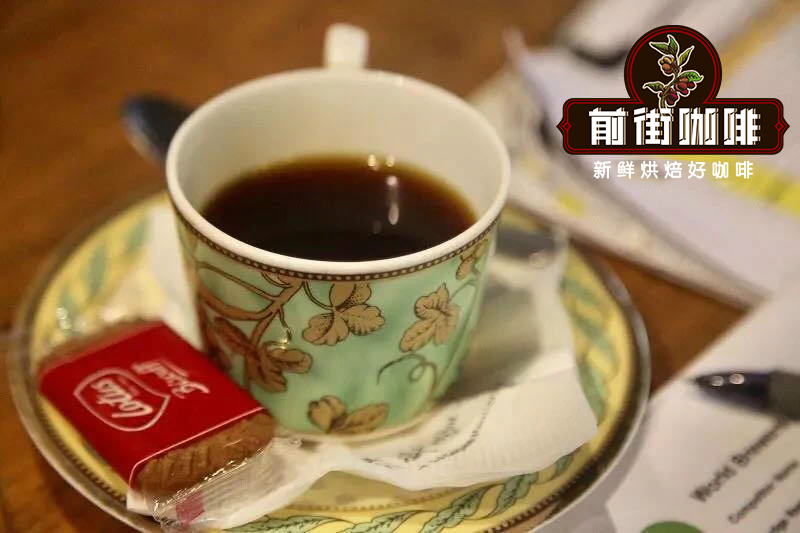
Qianjie Coffee believes that an important reason for the unique quality of Panamanian coffee is its microclimate. Bordering Costa Rica and Colombia, Panama's east-west environment allows cold air to flow through the Central Mountains at more than 6500 feet, creating a very unique microclimate in the Boquete and Volc á n Candela regions, making it a major producer of Panamanian coffee. The land around this area is rich in nutrients, and these fertile soils provide perfect conditions for the growth of coffee, creating a large number of unique, high-quality coffee. In addition, Panama has the help of the United States, the largest coffee consumer in the world, so Panama's coffee processing technology is the best in Central America.
In addition, since many Panamanian coffee farmers are wealthy families who emigrated from the United States to enjoy rural life, Panamanian farms enjoy the dual advantages of innate natural ecology and acquired management resources, which is extremely suitable for the development of fine agriculture. This is in sharp conflict with the reduction in production caused by commercial development brought about by American immigrants, so Qianjie believes that this has also become a double-edged sword for the development of Panamanian coffee.
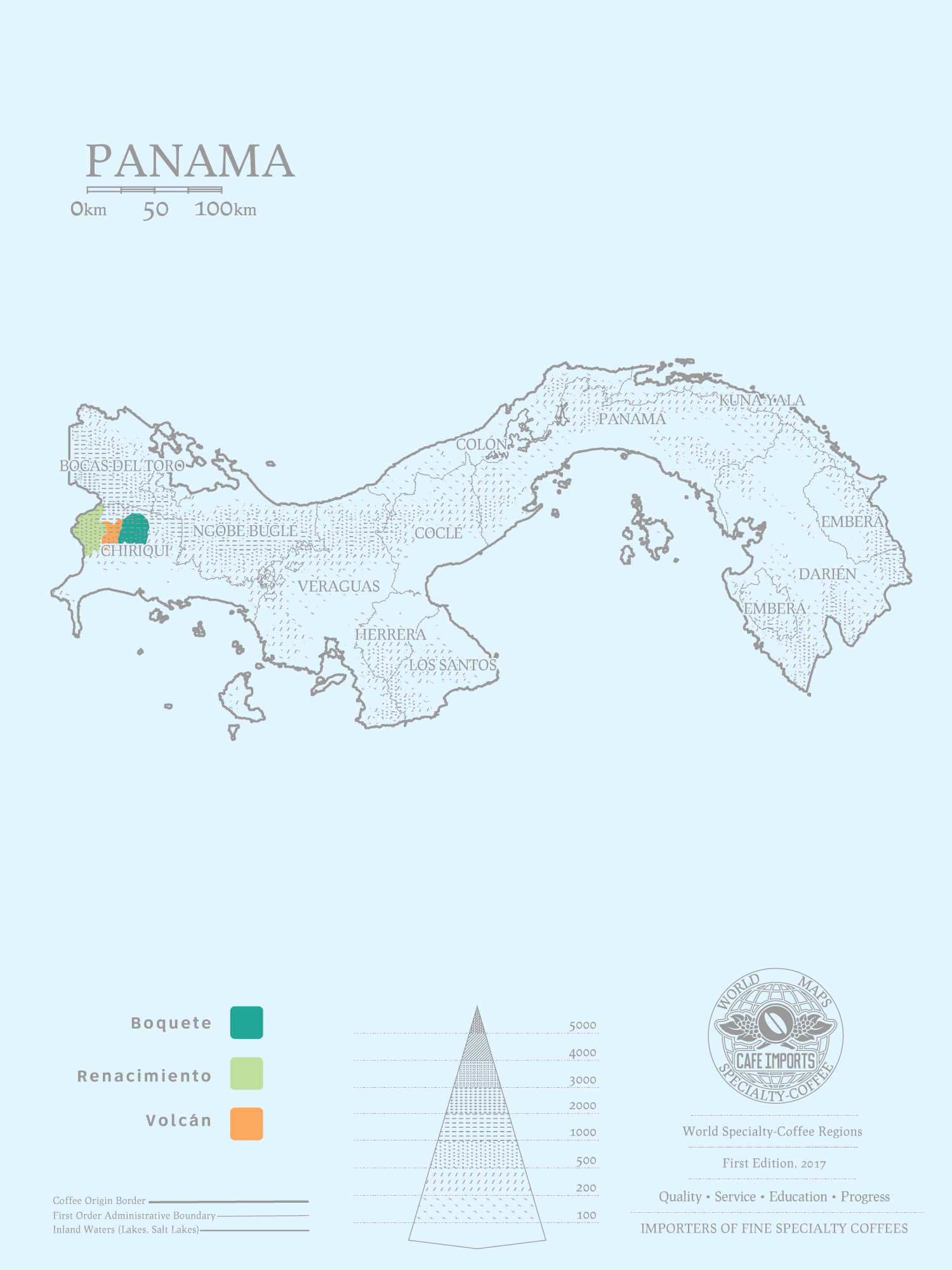
Panamanian Coffee Association (SCAP)
Front Street Coffee believes that Panama can stand out from the big coffee exporters in Central and South America, and the Panamanian Coffee Association (SCAP) plays a key role. In 1996, during the period when international coffee prices were low and coffee trees were hit by diseases and insect pests, Kotowa Manor Ricardo and Elida Manor Wilford,Don Pachi Manor Francisco,Esmeralda Manor Daniel and Rachel brothers and sisters, coffee ranchers from Pocket and Volcano region, launched the Panama Coffee Association, which shared and learned about planting and treatment techniques, and held BOP competitions.
Panamanian coffee grading system
Strictly High Grown (SHG): over 1300 meters.
High Grown (HG): over 1220-1300 meters.
Central Standard (CS): grow more than 600m above sea level.
Brief introduction of Panamanian producing area
Panama's boutique coffee is produced in Chiriqu í province on the west side of the country, while the Boquete region in Chiriki province has the longest history and is the most famous producing area of Panamanian coffee. Jalameyou Manor and Emerald Manor are not here either. This place not only has fertile soil of volcanic rock, but also is surrounded by fog, so that the temperature is not too high and the annual rainfall is abundant. It is the favorite growing environment for Arabica coffee trees. No wonder the quality of coffee is so good!
Bogut coffee producing area
Boquete is a high-altitude mountain with a planting height of 1450m. Its mountainous terrain creates many microclimates. The local fertile soil, towering terrain, wet and cold air, sunshine differences, and abundant rainfall, the coffee produced is of high quality, which is the region with the highest output and the best quality of Panamanian coffee. Rivers flow through them to create high-quality Panamanian boutique coffee. Qianjie Coffee believes that because Bogut is foggy, it can restrain the rise in temperature, coupled with special geographical conditions, give coffee excellent quality and characteristics. The infrastructure such as roads and processing facilities in Boguet is quite complete. as far as the production place of coffee is concerned, it has a perfect natural environment, and in recent years it has been very popular with the value of sightseeing. Gradually, many operators have given up the farm and began to welcome new business opportunities. This is the current situation of coffee production in Panama. The way of refining Panamanian coffee is to adopt the traditional washing style. First peel off the pulp, then put the fruit wrapped in the endocarp into a tank to ferment, and finally go through the traditional washing. As for the drying process, the most common exposure method is used.
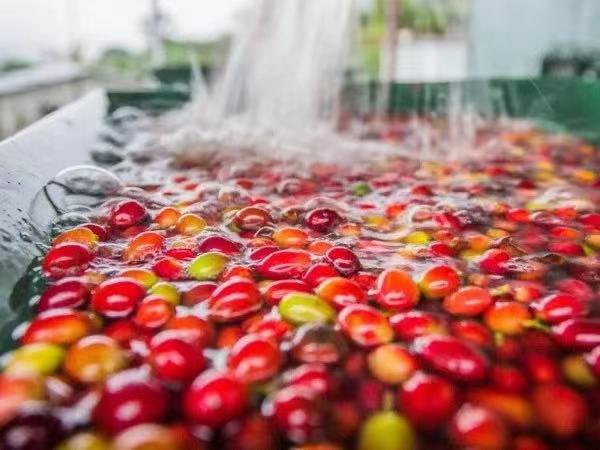
■ altitude: 400-1900m
■ production season: December to March
■ varieties: Typica,Caturra,Catuai, bourbon, geisha, San Ramon
■ flavor description: walnut, chocolate, thick, fat feeling
Kendra volcano producing area
The VOLCAN-CANDELA volcano, which borders Costa Rica, is named after the Volcan Baru volcano and the city of Piedra Candela, which produces most Panamanian food and some amazing coffee. The region is named after the cities of Baru and Piedra Candela, which borders Costa Rica.
■ altitude: 1200-1600m
■ production season: December to March
■ varieties: Typica,Caturra,Catuai, bourbon, geisha, San Ramon
■ Flavor description: the mild and balanced taste has gradually attracted the attention of international experts and coffee lovers, almost on a par with Boqui Special Zone.
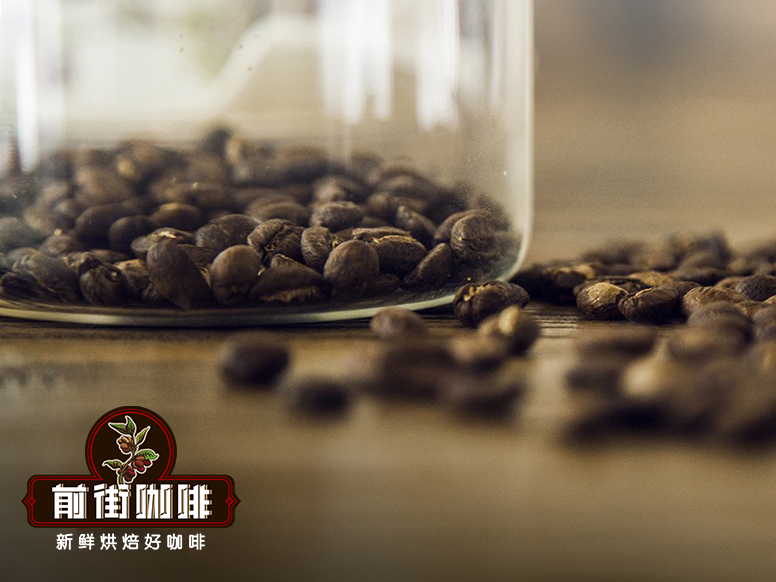
Walken producing area
When it comes to Panamanian coffee tradition, most of the boutique coffee producing areas that are familiar to the public come from Boquete, but in recent years, coffee from Volcan has gradually emerged in the boutique market, and at the same time, a considerable number of estates have entered the best Panama competition (Best of Panama) or even won the championship. Generally speaking, the average annual rainfall in Walken is less than that in Borquette. At the same time, the geographical environment located to the west of the Baru volcano also gives coffee a stronger dried fruit flavor, sweetness and aroma than the Boguet region.
In the early days, most of the cash crops such as fruits and vegetables were grown in Walken, and only a few farmers grew coffee, among which the pioneer of coffee cultivation in Walken belonged to the Hartman family, which was well-known in Panama.
Hartman Manor
Hartman, the most famous coffee family in Panama and the first farm in Volcan to grow coffee, attaches great importance to quality and actively tries new farming practices. Hartman Ratibor Hartmann Troetsch Sr., who inherited his father's coffee business in Santa Barbara in Volcan, founded Hartman Manor in 1940, which can be said to be the forerunner of the prestigious Volcan coffee region.
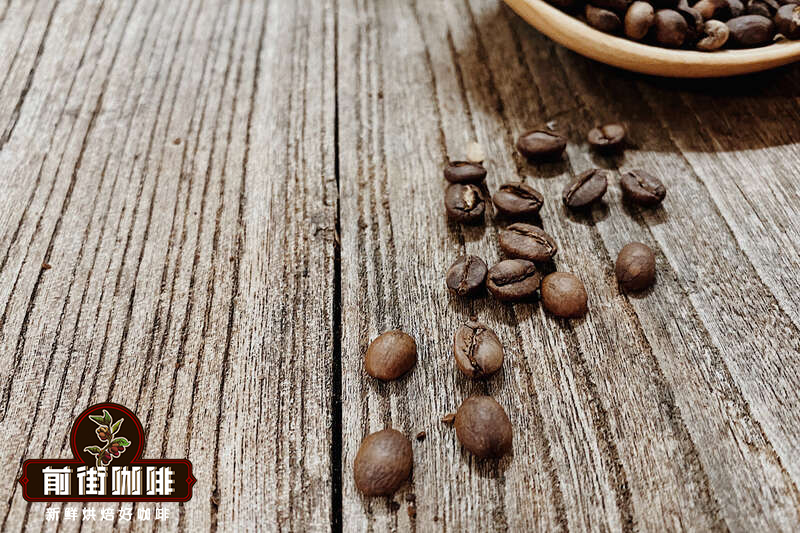
Volcan and Bogut, one to the east of Baru Volcano, one to the west of Baru Volcano, one to the Atlantic Ocean and one to the Pacific Ocean, have quite different coffee flavors. The most special thing about old Hartman is his respect for the natural environment. His father bought 500 hectares of land that year, but most of it was forest. After Hartman inherited the farmland, his friends advised him to cut down the forest so that he could make money by growing coffee on a large scale. Hartman did not listen to his friend's advice, but kept most of the original forest. Since the old Hartman, he has become the object of academic cooperation between the Smithsonian Tropical Research Center (Smithsonian Tropical Research Institute) and other wild conservation institutions. Scholars went to the park to do research and found many conservation species and birds. They not only wrote academic papers, but also recorded bird calls.
Hartman's third generation grew up on the manor from an early age, continuing not only the old Hartman's coffee farm, but also the family's positive attitude towards forest conservation, even with the word "Bird Friendly" on the manor's trademark. Hartman Manor is located in the Balu volcanic area, the soil is rich in nutrients of volcanic soil, towering original trees become the best shade planting environment, shade planting coffee grows slowly, can brew higher sweetness and brighter acidity. The alpine microclimate of Chiriqui Volcan has also become an excellent basis for Hartman coffee. A wide variety of beans are grown: Typica, Caturra, Catua í, Bourb ó n, Pach é, Pacamara, Maragogipe, etc., and more Geisha has been planted in recent years.
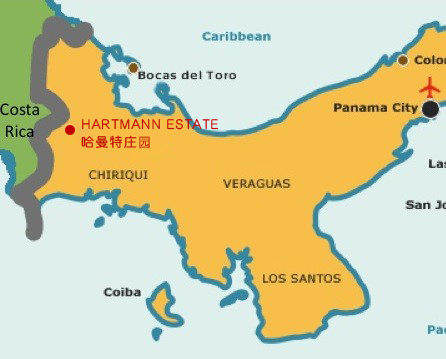
Legendary History of Hartman Manor
Hartman's story, like his coffee, is legendary. Hartman Manor is located in Chilidge, Santa Clara. The founder is called Mr.Alois St. Hartmann (Luis Hartmann). He was born on June 20, 1891 in the Moravilla region of Austria and Hungary in what is now the Czech Republic, and died on May 25, 1970 at the age of 78. After the beginning of World War I, he was abandoned as a little boy. Thanks to his mother, he was able to hide in a ship bound for Pennsylvania and survived.
Both of his brothers died in the war after joining the army. Luis Hartmann and his friends traveled to some countries until he came to Panama in 1911 and settled in Chiriki province in 1912, mainly in the Kendra region. He built his first cabin in the primeval forest. Today's Hartman Manor is a family business founded by Latip Hartman (son of Eloise) in 1940.
In 1966 Latip married Dinola Sandy of Costa Rica. They have five sons, Latipa Jr., Alan, Alexander, Alice and Kelly. Each family member is responsible for the growth management, harvesting and handling of the coffee and the visit to the manor. The family business has a state cup testing laboratory and a sample baking room. Test each batch of coffee fruit with a rigorous attitude and strict standard cups. This ensures that the coffee quality at Hartman Manor is stable and is always looking for progress. Their scientific attitude towards coffee and nearly 100 years of family experience ensure that they produce excellent products, and a family farm that has grown coffee for more than 100 years is itself a legend.
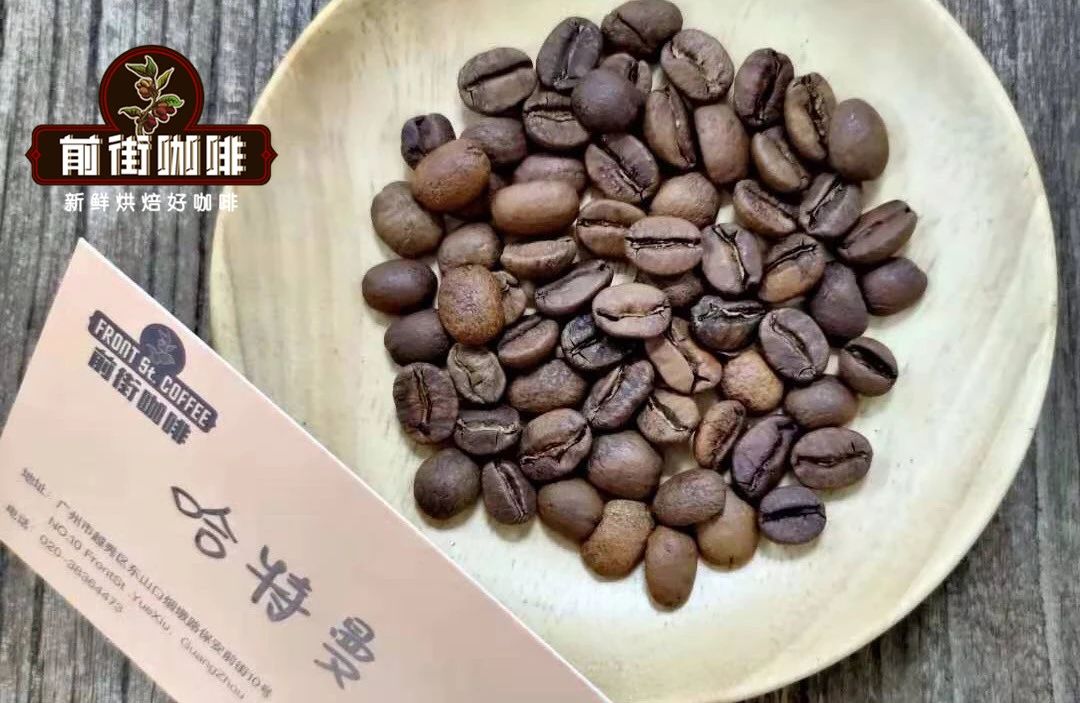
The Hartman family also manages and handles coffee for many Panamanian estates, such as Best of Panama's victorious mule estate (Finca La Mula) and the 90 + estate in Panama are under the management of the Hartman family. Although the estate is very low-key, Best Of Panama will rarely see them, but their coffee is one of the best in Panama. Panamanian coffee is famous today, thanks to the Hartman family.
Coffee bean processing method
Coffee bean red wine treatment
2015 WBC contestant Sasa brought to the world a Colombian coffee bean that has gone through a similar wine-making process. In addition to the novel taste of the beans, the "red wine treatment" that is used to deal with beans also makes coffee partners in front of the street as curious as many coffee lovers. What exactly is the so-called "red wine treatment"? I believe we all know the traditional coffee treatment methods such as washing, tanning and honey treatment, but what is the red wine treatment of coffee beans?
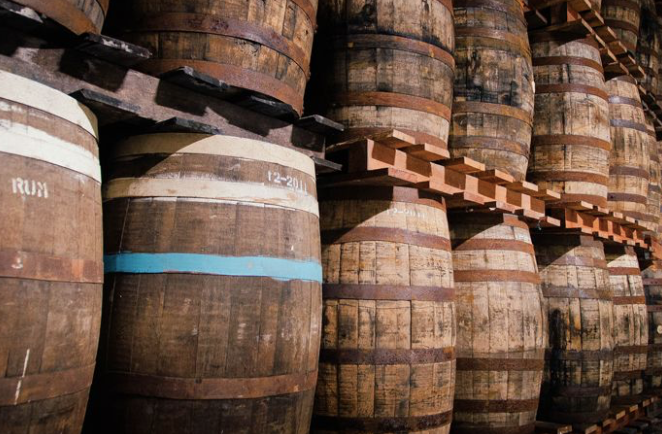
Red wine treatment of coffee beans, also known as quasi-red wine treatment, inspired by red wine brewing process. Front Street Coffee roughly divides the types of red wine treatment into:
Acetic fermentation (Aerobic fermentation)
lactic acid fermentation (Anaerobic fermentation)
Mixed Fermentation=Aerobic+Anaerobuic
Traditional processing methods are difficult to control the variable fermentation degree of coffee beans. But red wine processing rules can control pH, even temperature and humidity, to ensure the quality of coffee beans, and closed fermentation makes aroma less volatile.
Red wine fermentation process
First, coffee farmers carefully pick coffee cherries and carefully select coffee red fruits to ensure that the percentage of immature cherries selected for processing is less than 2%, the percentage of defective beans is less than 3%, and the percentage of floating beans is less than 5%.
2. The selected coffee cherries are placed in specific containers (metal containers for beans used by Australia barista Sasa for competition). In any case, the container should have a device similar to a red wine fermentation stopper or a single vent valve. In this way, carbon dioxide can escape through the device to control the concentration of air in the container. At this time, the coffee cherries in the container undergo acetic acid fermentation, and the beans produced by this reaction have a relatively bright flavor, clean, and lemony acidity.
According to Sasa's description of the game, processors inject carbon dioxide into the container to prevent oxidation to volatile acids, a process known as lactic acid fermentation, which produces malic acid and stearic acid, which is relatively stable, so lactic acid fermentation produces beans that are more acidic and have a cheesy, nutty, creamy flavor.
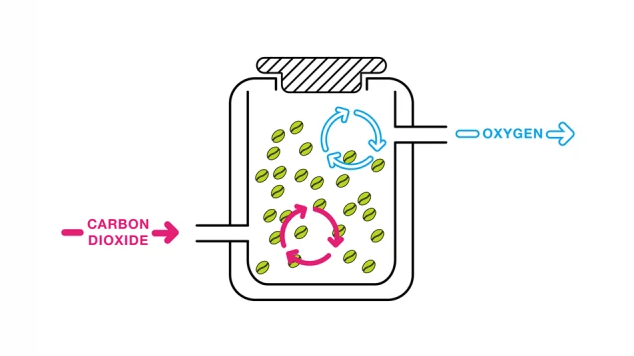
Coffee Variety-Kaduai
Kaduai is also an Arabica hybrid. It is a hybrid of Mundo Novo Mondonovo (New World) and Caturra Kaddura. It has a good ability to resist natural disasters, especially wind and rain. It inherits the advantages of Kaddura's low stature and changes Mondonwood's shortcomings. Another advantage is that the result is solid, and it is not easy to fall off when the strong wind blows, which makes up for the weakness of Arabica fruit, but the overall flavor is more monotonous than Kaddura, monotonous and less mellow, which is the greatest pity. In addition, the fruit growth and harvest life is only about ten years, and the short life span is also one of the weaknesses.
Kaduai has the difference between Catuai Amerelo and Catuai Vermelho. The fruits are both red and yellow, but so far, no yellow fruit has been found to taste better than the red fruit. On the contrary, some people have found that although some yellow fruits have good acidity, the coffee tastes less dry than the red fruit. Statistically, Hongguo Kaduai often wins prizes.
Because Kaddura has a large quantity and is not easy to have diseases and insect pests, but the taste is not good and the flavor is not good, so based on Kaddura, a new Kaduai is derived to improve the poor taste and flavor.
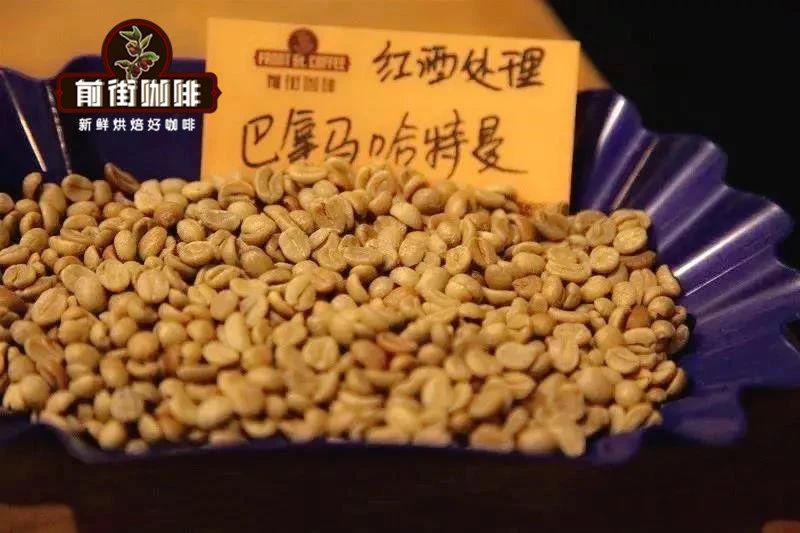
Baking analysis
Panamanian Hartman Manor Coffee has relatively small particles, slightly higher density and medium water content. The goal of Qianjie coffee roasting is light and medium roasting, which is different from other medium roasting of Panamanian beans. This Hartmann red wine is treated with light and medium baking to retain excellent acidity, tropical fruit flavor and red wine-like fermentation flavor. the overall performance is sweet and sour, round, fresh and elegant.
In the first batch of baking, the lower bean temperature is relatively high, the bean temperature is 200 degrees, and the firepower is also relatively high. In the process of baking, it was found that the elevation of the bean was relatively low, but the bean quality was hard, so the baking method of gradually lowering the fire and climbing steadily was adopted, and the firepower was adjusted separately before the bean entered the yellow point, the dehydration was finished, and the precursor of an explosion was finished to avoid burning. and choose to come out before the end of an explosion to shorten the time of caramelization reaction and retain the cleanliness and aroma of flowers and fruits.
Roaster Yangjia 600g semi-direct fire
Enter the pot when the furnace temperature is 200 degrees Celsius, adjust the firepower to 170 degrees after opening the throttle for 3 and 30 seconds, keep the throttle unchanged, the temperature recovery point is 1: 39 ", keep the firepower, when 4: 57", the bean surface turns yellow, the smell of grass disappears completely, enter the dehydration stage, the firepower is reduced to 130 degrees, and the throttle is maintained at 3.5 degrees.
8 ′ 00 ′ ′ ′ dehydration completed, fire to 80 degrees, 8 ′ 00 "when the beans appear ugly beard wrinkles and black stripes, toast flavor obviously changed to coffee aroma, can be defined as the prelude to a burst, this time to hear the sound of a burst point, to 8 ′ 43" to start a burst, turn down the fire to 60 degrees, throttle fully open 5 (adjust the fire to be very careful, not small to no burst sound), a burst after the development of 1 ′ 43 ", 195.5 degrees under the pan.
cup test report
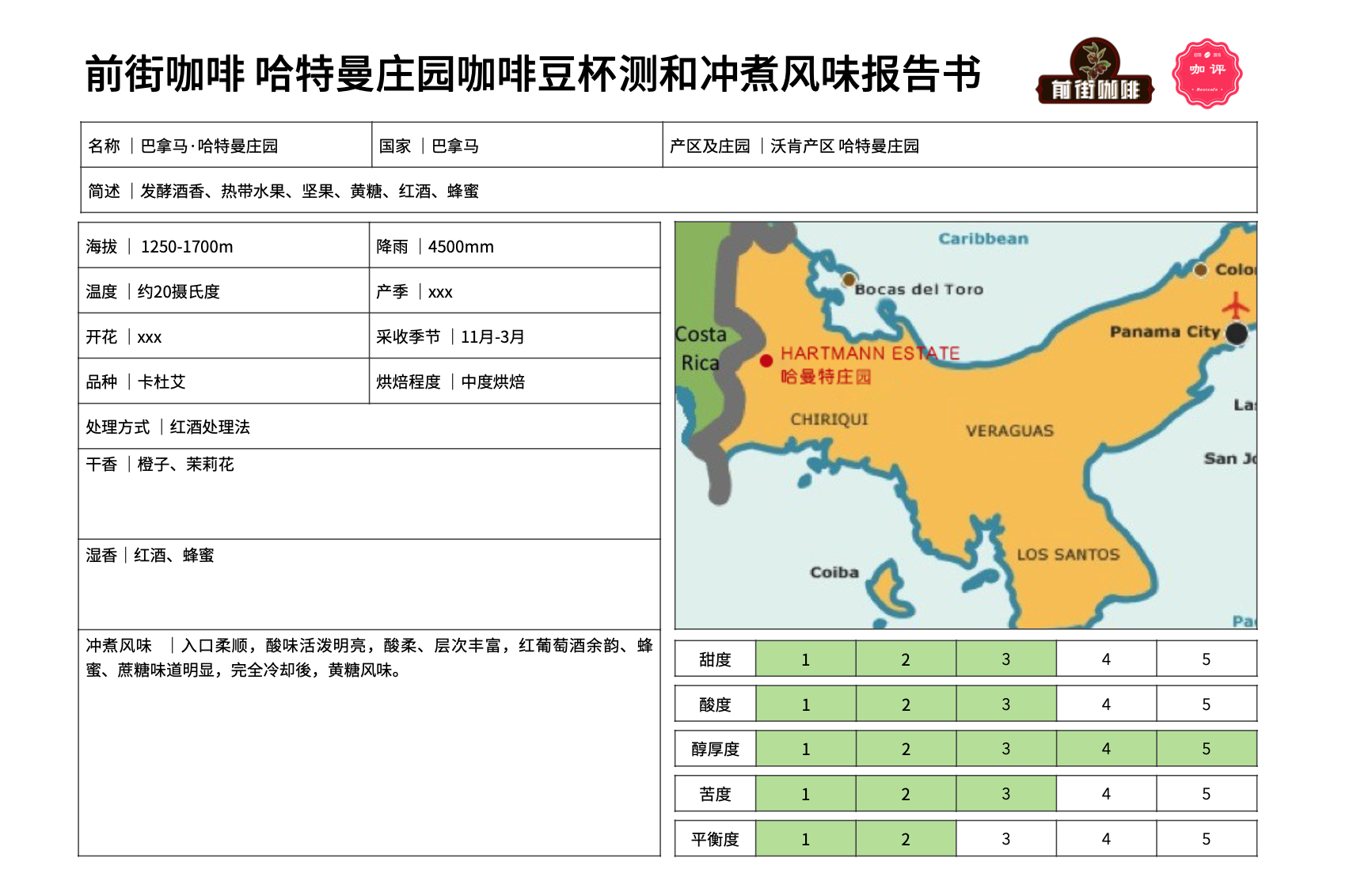
Cooking analysis
Filter cup: V60 filter cup
Powder dosage: about 15g
Powder / water ratio: 1:15
Water temperature: 90 degrees
Degree of grinding: medium and fine grinding (sugar size)
Flushing and cooking methods: the first injection of 25g water, 25 s of steaming, the second injection to 120g of water cut off, waiting for the powder bed water to half of the water injection, slow water injection until 225g of water, extraction time about 2:00.
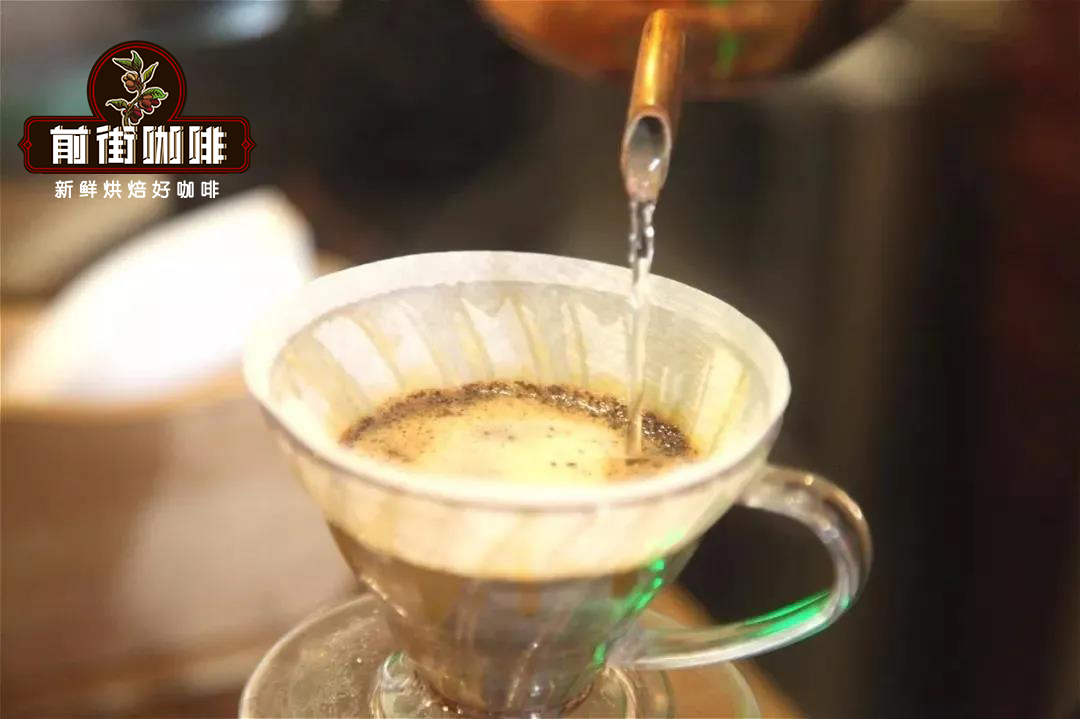
For more boutique coffee beans, please add private Qianjie coffee on Wechat. WeChat account: kaixinguoguo0925
Important Notice :
前街咖啡 FrontStreet Coffee has moved to new addredd:
FrontStreet Coffee Address: 315,Donghua East Road,GuangZhou
Tel:020 38364473
- Prev
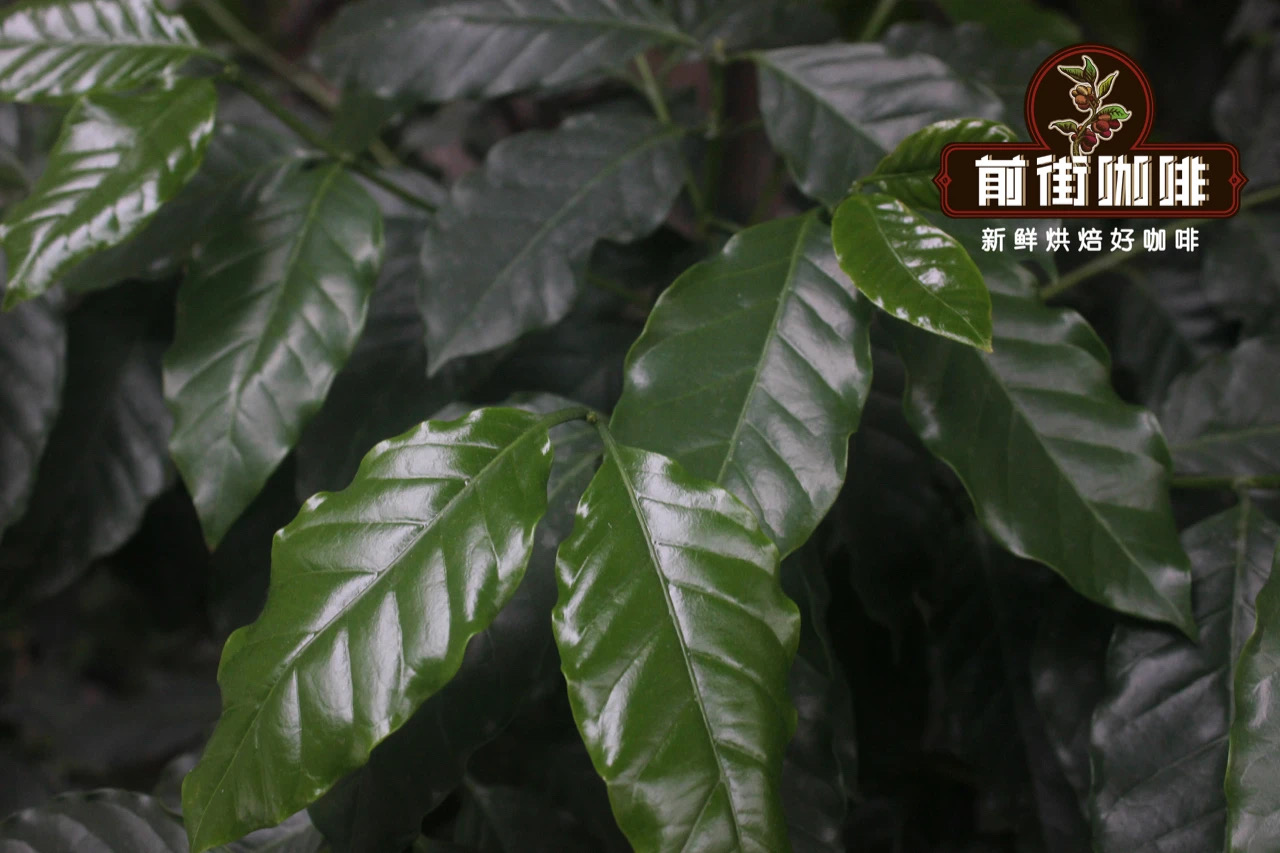
Katim Coffee Bean Historical Story the characteristics of hand-made flavor introduce the output of Yunnan boutique coffee bean varieties
The field management measures are suitable for the management of general small-grain coffee. Propagation method: adopt seed propagation, select 5-year-old fine mother tree, harvest fully mature, fruit shape is normal, full, size is basically the same, with two-seed fruit as seed, using sand bed to promote germination, plastic bag seedling. The annual average temperature of the selected forest land is 1921 ℃, and the accumulated temperature of 10 ℃ is more than 6800 ℃.
- Next

How does Kopi Luwak taste? brewing method brand?-is Kopi Luwak made of cat shit?
In Indonesian, Kopi means coffee, and Luwak is the name of the civet commonly known in Indonesia. It is said that the coffee produces no more than 500 pounds a year, and the price per pound ranges from $300 to $800, depending on the year, because there is not a fixed production every year. In the international market, Luwak coffee has always been a veritable luxury, the most important
Related
- Detailed explanation of Jadeite planting Land in Panamanian Jadeite Manor introduction to the grading system of Jadeite competitive bidding, Red bid, Green bid and Rose Summer
- Story of Coffee planting in Brenka region of Costa Rica Stonehenge Manor anaerobic heavy honey treatment of flavor mouth
- What's on the barrel of Blue Mountain Coffee beans?
- Can American coffee also pull flowers? How to use hot American style to pull out a good-looking pattern?
- Can you make a cold extract with coffee beans? What is the right proportion for cold-extracted coffee formula?
- Indonesian PWN Gold Mandrine Coffee Origin Features Flavor How to Chong? Mandolin coffee is American.
- A brief introduction to the flavor characteristics of Brazilian yellow bourbon coffee beans
- What is the effect of different water quality on the flavor of cold-extracted coffee? What kind of water is best for brewing coffee?
- Why do you think of Rose Summer whenever you mention Panamanian coffee?
- Introduction to the characteristics of authentic blue mountain coffee bean producing areas? What is the CIB Coffee Authority in Jamaica?

